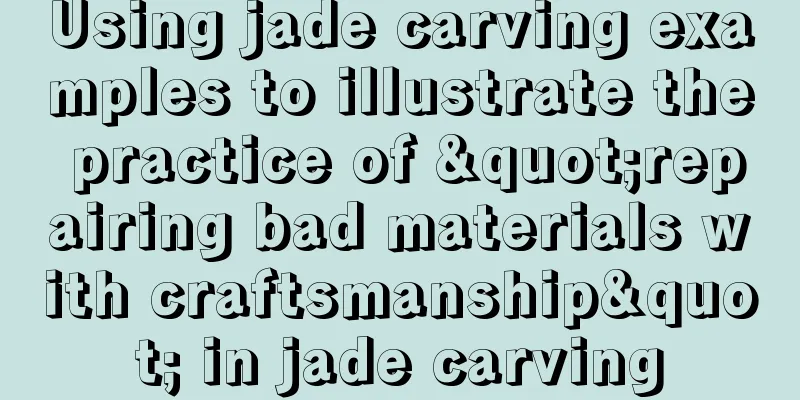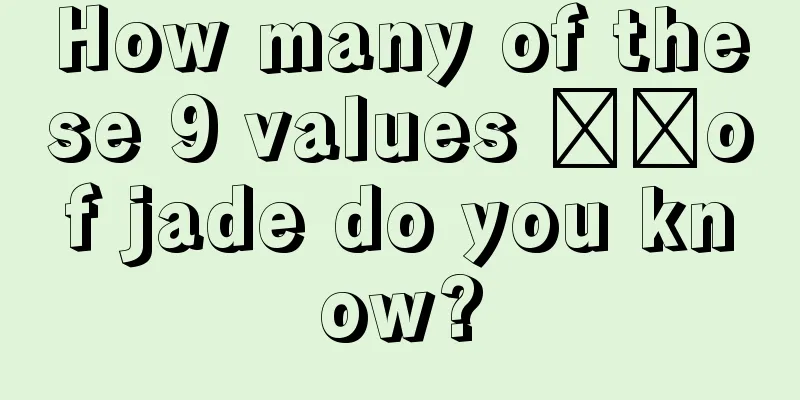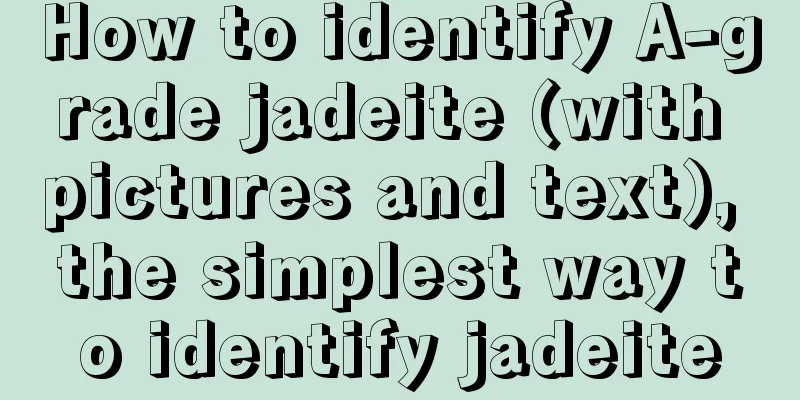The auspicious meaning of jade Ruyi!

|
China is an ancient civilization with a long history. Traditional Chinese culture has formed a unique way for Chinese people to express their emotions, blessings and other wishes. When relatives and friends meet or part, they often use words such as "all the best", "good luck", "peace and happiness" to express their blessings. "Ruyi" means "willingness" follows people's "wish". The speaker is sincere and the listener feels at ease. The abstract meaning is very easy to understand. With the development and progress of culture, our ancestors created some ornaments that are rich in emotional colors, and injected these auspicious blessings and wishes into these ornaments. The most typical of these is "Ruyi". The earliest Ruyi discovered so far was made of bronze. During the Han Dynasty, people began to use Ruyi made of bones, animal horns, jade, stone, bamboo, coral and metal materials. They were about one foot long, and the handles were mostly finger-shaped, but there were also Ganoderma lucidum-shaped, heart-shaped, cloud-shaped and so on. Since the Tang Dynasty, the production of Ruyi has become more sophisticated, and the shapes have become more colorful, winning people's favor. During the Ming and Qing dynasties, it gradually changed from a practical item to a decorative art piece for people to appreciate and entertain. Its length became shorter, and the shape of the handle end was changed into rare Ganoderma lucidum shapes, cloud shapes, etc. The main body is streamlined, the handle is slightly curved, and the overall shape is beautiful and gorgeous. In terms of materials, there are more handicrafts made of precious materials such as gold, jade, crystal, ivory, agate, etc., and relief, hollowing, inlaying and cloisonné techniques are also used, and they are decorated with fine and gorgeous patterns. Among the fine products are Han jade sandalwood handle Ruyi, gold hollow Ruyi inlaid with pearls, jadeite three-inlaid Ruyi, stone carved lacquer Ruyi, wooden handle inlaid with jade, cloisonné enamel Ruyi, etc., which have high artistic and appreciation value. In the late Qing Dynasty, Ruyi became an ornamental and collectible item, and its value increased greatly. In the Qing Dynasty, Ruyi moved from the folk to the palace, becoming a tribute presented by ministers to the emperor, and also a precious gift from the emperor for the promotion of palace maids and the selection of concubines. Empress Dowager Cixi, who believed in fortune-telling very much, was particularly fond of ruyi. When she was in power, she even demanded that a ruyi must be placed in every room in the Forbidden City. According to statistics, the Forbidden City now has more than 10,000 ruyi of various materials and styles. After jadeite entered China, Empress Dowager Cixi had a special liking for jadeite ruyi. Officials from all over the country went to great lengths to collect large quantities of jadeite ruyi in order to please Empress Dowager Cixi. Among the ruyi in the collection of the Palace Museum, there are some with inscriptions by tribute-payers. Whenever the emperor ascended the throne, the empress and concubines had their birthdays, festivals and festive occasions, the ministers would present ruyi to the emperor, his concubines and others. It is said that when Empress Dowager Cixi celebrated her 60th birthday, she received 80 precious and exquisite ruyi gifts alone. Ruyi was also the token and certificate of the emperor's selection of his queen, and a gift given by the emperor and empress to ministers and confidants. Even some foreign envoys could sometimes receive Ruyi as a gift from the emperor. The jadeite Ganoderma lucidum-shaped Ruyi in the Qing Palace collection is 47.8cm long. It is carved from a whole piece of jade in the shape of Ganoderma lucidum, with small ganoderma, flowers and fruits carved all over the body. It has bright jade color, good quality, full of water, and is exquisitely carved. It is the best among the palace Ruyi. Such a large piece of jade ruyi is extremely rare and precious. (Karl Lafayette used it, right?) "Ruyi", which has the meaning of auspicious blessings for thousands of years, also occupies a very important position in our modern jade jewelry. Our jade carving masters have made full use of the spirituality of jade and endowed Ruyi with new humanistic and artistic charm through their exquisite skills, creating the Ruyi treasure that modern people can't put down. It is loved and liked by modern people, and it carries our good wishes for our relatives and friends, and we hope that happiness and auspiciousness will accompany us every day. fcgc66 fcpf18 |
<<: Small but exquisite, jade Ruyi
>>: New trend in investment and collection: jade investment
Recommend
The price of jade is rising step by step. How should we view jade investment?
Jade has deep historical and cultural roots and i...
There are six grades of jadeite, what kind of jadeite can be considered the best?
What does the sixth grade of jadeite mean? Let’s ...
Appreciate the artistic beauty of jadeite craftsmanship!
A high-quality jade product, in addition to havin...
How to choose a jade peace locket? What should you pay attention to when choosing a jade pendant?
Before talking about how to choose a jade peace l...
How to identify A, B, and C grade jadeite with the naked eye, this post is a must-read!
There are fakes of famous paintings and counterfe...
Why is the price of jade beads so expensive? You will know after looking at its production process
A few days ago, a friend suddenly asked me why a ...
The correct identification method of jadeite, you must read it
Jade is not only a wearable jewellery but also a ...
How to choose jadeite of various colors?
No matter what color the jade is, it is best to c...
When buying jadeite, should you look at the quality or the color? Have you made the right choice?
Most people familiar with the jade industry have ...
How to choose a jade hand-held piece that you are satisfied with?
When it comes to jade, many people's first im...
Do you know these jade points that are easily overlooked?
When we talk about jade, we always talk about its...
The principle of “simple is beautiful” also applies to jadeite!
The most famous quote in the history of world des...
A puzzling piece of spring-colored jadeite was saved by the creativity of the jade carver. . .
Sometimes, when we see a piece of material that c...
What is the investment value of jadeite? Jade project investment should take a long-term view
The historical time of jade is also related to th...
How to choose high-quality black jadeite? Eight tips on black jadeite will teach you to understand the essence of black jadeite
Black jadeite is generally believed to be a type ...









